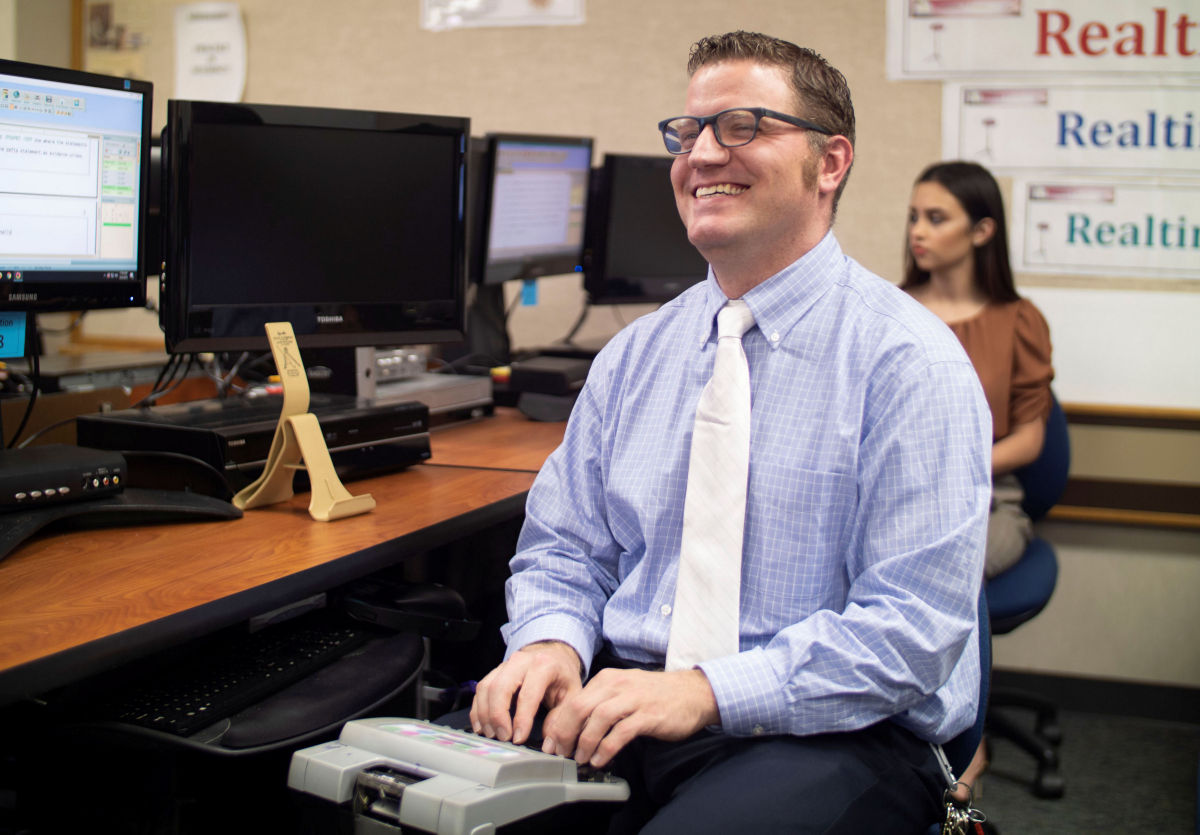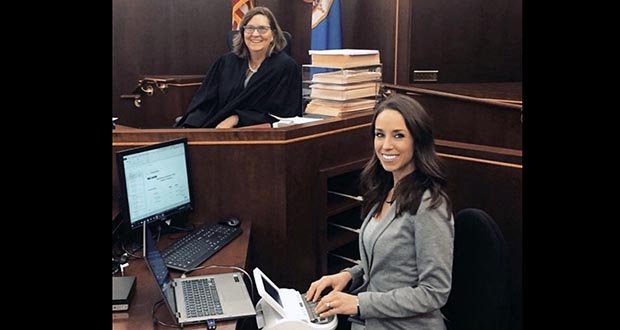Common queries about durham court reporting answered
Just How Court Reporting Works: A Step-by-Step Guide to the Legal Process
Court reporting is an important element of the lawful system. It involves an organized process that guarantees exact documents of process. From prep work to the last distribution of transcripts, each step is essential. Recognizing how court press reporters run offers insight right into the stability of lawful documents. The nuances of their job can profoundly affect legal end results, triggering inquiries regarding the innovations and methods they utilize. What are the specific techniques that specify this profession?
The Duty of Court Reporters in the Legal System
Stenotype reporter play an essential function in the legal system by supplying accurate and trusted records of court proceedings. Their job guarantees that every spoken word throughout trials, depositions, and hearings is recorded, which is crucial for keeping a main record of occasions. This transcription is basic for charms, as it permits greater courts to evaluate the process and identify if any kind of mistakes were made during the trial.
In addition, stenotype reporter help in maintaining the integrity of the legal process by developing verbatim records that can be referred to by legal representatives, judges, and other celebrations associated with a case. They typically utilize specific tools and software program to capture dialogue with precision. Beyond the court, their records can act as important historical records, supplying understanding right into judicial proceedings and the lawful system's performance. Ultimately, stenotype reporter contribute considerably to transparency and liability in lawful matters.
Getting ready for a Court Reporting Session
Prep work is important for an effective court reporting session, as it guarantees the accuracy and efficiency of the transcription procedure. Stenotype reporter start by examining case materials, including pleadings and witness lists, to familiarize themselves with the terms and context. They likewise make sure that they have the essential devices, such as steno equipments, note pads, and back-up tools, prepared for use.
Prior to the session, interaction with lawful groups is crucial. Press reporters commonly clear up any type of particular requests regarding format or liked terms. Furthermore, they may arrange to fulfill with witnesses or attorneys to discuss the proceedings and validate the routine. Arriving very early to establish the devices allows for troubleshooting possible technical issues. On the whole, detailed preparation not only boosts the reporter's self-confidence however also adds considerably to producing a clear and accurate record of the lawful proceedings.

Recording the Record: Techniques and Devices
Utilizing innovative techniques and trusted devices, stenotype reporter diligently catch the talked word during lawful proceedings. They utilize stenography, an approach involving a specialized maker that allows them to type numerous audios all at once, thus recording discussion in real time. This maker, referred to as a steno keyboard, is furnished with tricks that represent words and syllables, enabling swift and precise input.
Along with stenography, court reporters may use audio recording tools as supplemental tools. These gadgets function as back-ups, ensuring that no essential details is lost during procedures. Some press reporters integrate software application that improves their transcription effectiveness, using attributes such as voice acknowledgment and automated format.
Correct positioning and emphasis are vital; press reporters need to keep focus on all audio speakers, recording subtleties and inflections that add to the document. With a mix of skill and innovation, stenotype reporter maintain the stability of the legal process by guaranteeing a exact and complete record of events.
Transcribing the Process
Recording the process needs court reporters to convert talked discussion right into composed text with remarkable accuracy and speed. This procedure normally takes location right away after the recording has been recorded, making use of specialized software application that enables smooth transcription. Court press reporters should listen diligently to the audio, guaranteeing that every word, inflection, and time out is properly represented in the records.
They commonly rely upon shorthand systems, individual transcription abilities, and advanced modern technology to facilitate this job. The atmosphere in which they work can be often chaotic and hectic, as lawful procedures typically include numerous audio speakers and technical jargon. Stenotype reporter should likewise maintain focus to capture subtleties in tone and context that may be crucial for the legal document. Ultimately, the accuracy of the transcription is critical, as it functions as a certification for future reference in legal process.
Evaluating and Modifying the Transcript
The procedure of assessing and editing the transcript is essential for guaranteeing precision in court reporting. Stenotype reporter typically team up with attorneys to clear up any kind of ambiguities and confirm the accuracy of the videotaped statements. This partnership is important for keeping the stability of the lawful document.
Relevance of Precision
Accuracy offers as the foundation of effective court reporting, as even minor errors can substantially modify the meaning of legal procedures. The examining and editing and enhancing process is vital in making certain that records reflect the spoken word with fidelity. Stenotype reporter carefully confirm names, technological terms, and lawful jargon to preserve accuracy. This interest to detail assists stop misconceptions that might impact situation results. Moreover, precision fosters depend on amongst lawful specialists, customers, and the court, enhancing the honesty of the judicial system. Errors can bring about disputes or appeals, making it important for reporters to refine their job completely. Eventually, the pursuit of precision not just improves the reliability of the records yet likewise supports the standards of the lawful occupation.
Collaboration With Lawyers
Cooperation between stenotype reporter and lawyers is important during the reviewing and editing stage of transcript manufacturing. This procedure guarantees that the last file accurately shows the spoken word and follows legal criteria. Lawyers commonly evaluate records for specific image source terms, context, and any possible errors that can affect the instance. Stenotype reporter rely upon attorneys' proficiency to make clear ambiguous areas or highlight important statements. Efficient communication is crucial; lawyers may give feedback or request improvements, which court press reporters must attend to promptly. This partnership not just enhances the high quality of the records but likewise adds to a smoother legal procedure. Ultimately, collective initiatives lead to a trustworthy and precise record, necessary for future referrals and legal procedures.
Providing the Last Records to Clients
Upon completion of the transcription process, stenotype reporter diligently prepare the last document for delivery to their clients. This last records undertakes comprehensive proofreading to ensure precision, as any errors could considerably affect lawful process. Court press reporters layout the document according to the specific requirements set forth by the clients or legal firms, including pagination, indexing, and any required exhibitions.

Court reporters may offer a cover letter summing up essential details and offering more aid if required. This complete method guarantees that customers obtain a refined, exact, and easily navigable transcript, crucial for their lawful requirements.
Frequently Asked Inquiries
What Certifications Are Needed to Come To Be a Court Press Reporter?
To become a court press reporter, people generally require a secondary school diploma, completion of a court reporting program, and certification or licensure, relying on state requirements. durham court reporting. Effectiveness in shorthand and innovation is also necessary for success
The length of time Does It Take to Full Court Reporting Training?
Normally, completing court reporting training takes in between 18 months to four years, relying on the program's intensity, the pupil's pace, and the details requirements of the territory in which they his comment is here wish to exercise.

What Is the Typical Wage of a Stenotype Reporter?
The typical wage of a stenotype reporter varies by area and experience, generally ranging from $45,000 to $100,000 each year (durham court reporting). Factors such as expertise and need can greatly influence their incomes in various areas
Are Court Reporters Required to Have Certification?
Stenotype reporter are normally called for to obtain certification, which ensures they have the essential abilities and knowledge for accurate transcription. Accreditation demands can differ by state or territory, mirroring specialist criteria within the lawful community.
Can Court Reporters Work Remotely or Freelance?
Court reporters can work remotely or freelance, offering versatility in their occupation. Lots of use modern technology to record process from different places, enabling varied possibilities in the lawful area while preserving a work-life balance.
Court reporters play a necessary function in the legal system by offering accurate and reputable records of court process. In addition, court press reporters help in preserving the integrity of the lawful procedure by producing verbatim records that can be referred to by lawyers, courts, and various other celebrations included in a case. Making use of innovative methods and reputable equipment, court press reporters diligently catch the talked word throughout legal proceedings. Court press reporters should likewise preserve concentration to record nuances in tone and context that might be crucial for the lawful record. To come to be a court reporter, people normally need a high college diploma, conclusion of a court reporting program, and qualification or licensure, depending on state needs.